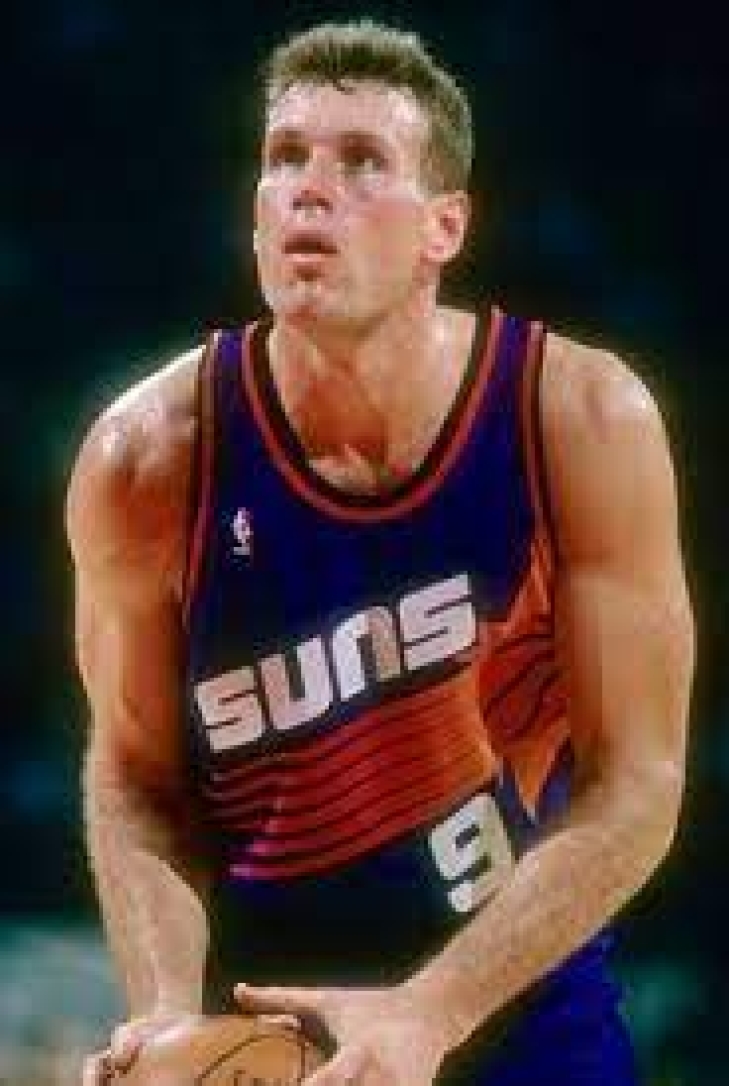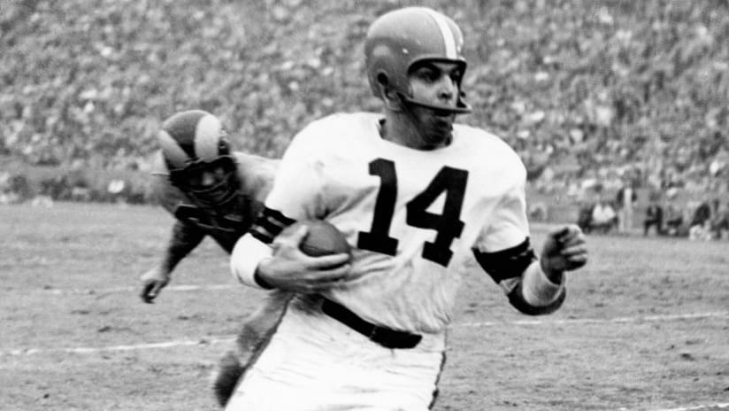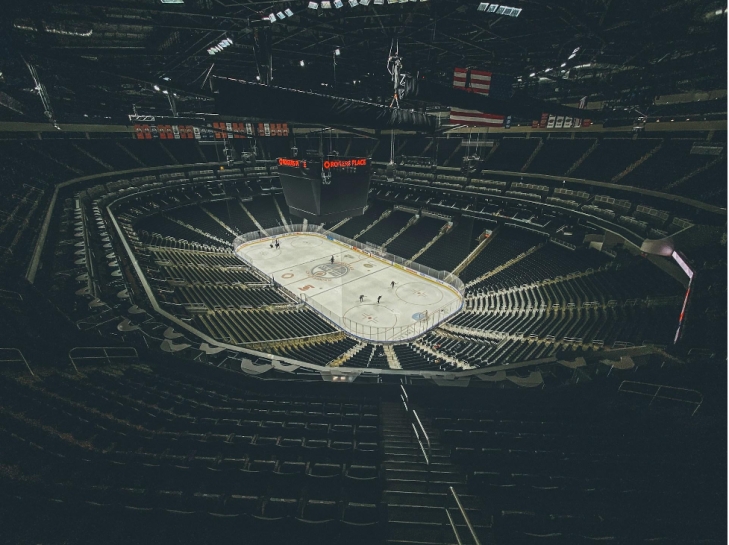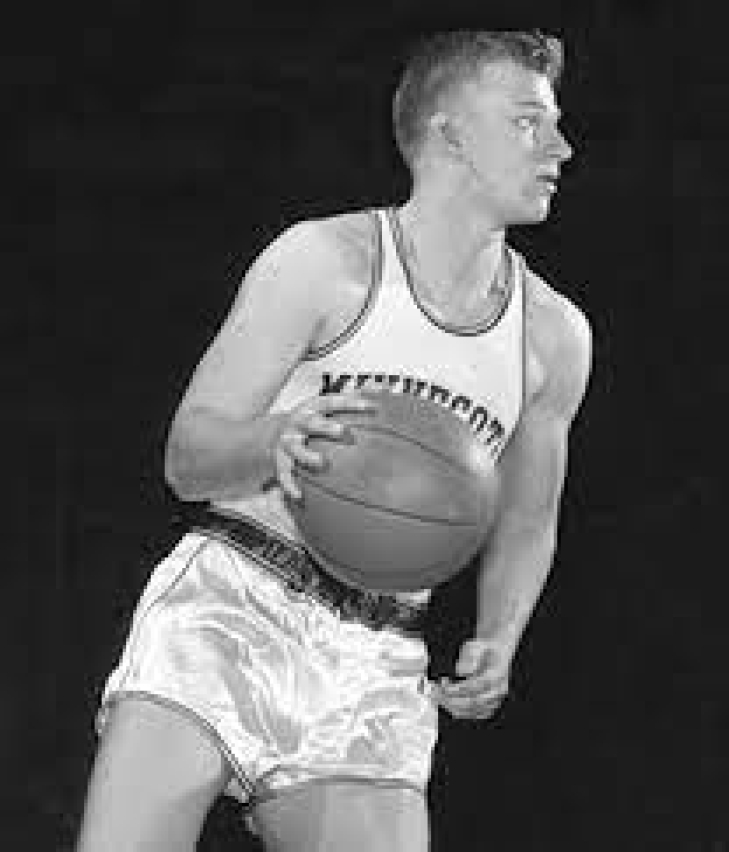
Committee Chairman
89. Dan Majerle
Dan Majerle was one of the greatest players in Central Michigan’s basketball history. He earned All-MAC honors three seasons in a row (1986-88), and the Chippewas retired his number 44 years later. His college career landed him a First-Round pick in 1988 by the Phoenix Suns, the professional team he had his greatest success with.
The Suns fans were initially upset with Majerle’s selection. He didn’t look like much, and he came from a smaller D1 school. It didn’t take long for Majerle to win over the fan base, with his strong transition game, solid defense and long-range shooting. Majerle was a Second Team Defensive Team in 1991 and 1993, mostly off the strength of ability to glove his opponents. A three-time All-Star, Majerle led the NBA twice in 3-Point Field Goals twice (1993-94 & 1994-95). He also played a large part in the Suns’ run to the NBA Finals in 1993, where they lost to Michael Jordan and the Chicago Bulls in six games.
After his peak in Phoenix, Majerle played for Cleveland for a year and then Miami for five, though his role reduced annually. After a final year back with the Suns, Majerle retired with a solid basketball career behind. with a FIBA Gold Medal and a retired number with the Suns. That sounds pretty good to us!
Pro Football Hall of Fame Revisited Project: 1961 FINAL VOTE
1961 Pro Football Hall of Fame Revisited Project Class.
Here we are! Again!!
If you have been following our Pro Football Hall of Fame Revisited Project, you know that we have asked the rhetorical question: What if the PFHOF began in January 1946?
After soliciting and obtaining a passionate group of football fans and historians, we sent out a ballot for a Preliminary Vote, in which we asked each voter to give us 25 names as their semi-finalists and 5 in the Senior Pool. Following that, we asked the group to vote for their 15 Finalists in the Modern Era and 3 in the Senior Category. The final stage was to vote for their five Modern Era inductee and one Senior inductee.
This is the result of the sixteenth official class;
Below are the final results of this project based on 31 votes,
Remember that the group took a vote in “1961”, and we have reverted back to the top five candidates entering the Hall PROVIDING THEY MAKE 50% of the vote. This will be put to a vote again in “1963”.
This is for the “Modern Era”
*Bold indicates they have been elected to the Pro Football Hall of Fame Revisited Class of 1961:
|
Player |
Year of Eligibility |
Vote Total |
|
Otto Graham QB |
1 |
31 |
|
Marion Motley FB |
1 |
28 |
|
Pete Pihos E-DE |
1 |
19 |
|
Charley Trippi HB-QB-DB |
1 |
17 |
|
Doak Walker HB-DB |
1 |
15 |
|
George Connor T-LB-DT-G |
1 |
10 |
|
Ward Cuff WB-QB-HB |
9 |
6 |
|
Marshall Goldberg FB |
8 |
6 |
|
Joe Kopcha G |
20 |
5 |
|
Dick Barwegan G |
2 |
5 |
|
Buckets Goldenberg G-BB |
11 |
4 |
|
Bill Osmanski FB |
9 |
2 |
|
Lou Rymkus T |
5 |
2 |
|
Ed Sprinkle DE-E-G-LB |
1 |
2 |
|
Pat Harder FB |
3 |
1 |
This is for the “Senior Era”, *Bold indicates they have been elected to the Pro Football Hall of Fame Revisited Class of 1961, though no one made the mandatory 50% threshold to advance.
|
Tony Latone |
6 |
12 |
|
Hunk Anderson |
11 |
10 |
|
None of the Above |
N/A |
5 |
|
Al Nesser |
5 |
4 |
About the 1961 Inductees:
Otto Graham QB-DB, CLE 1946-55: Inducted in the Pro Football Hall of Fame Revisited Project in 1961 on his 1st Ballot. Inducted into the actual Pro Football Hall of Fame in 1965.
Otto Graham was the first player that Cleveland Browns owner; Paul Brown, sought when he assembled his team in 1946 to begin play in the All-American Football Conference. Brown was right to convert the Northwestern Tailback to a pro Quarterback in the T-Formation. Graham and the Browns dominated the AAFC, and without question, Graham was the best player in the upstart league. The Browns won every single title in the four-year existence of the AAFC, and Graham was at the forefront of that success. The AAFC would merge with the NFL, and it was expected that those teams would not be successful in the first few years of the unification. They were wrong. The Browns won the 1950 NFL Championship, thus proving the merit of the AAFC; Graham won two more NFL Championships and was, overall, a five-time league leader in Passing Yards. In the ten years he played, there was never a year where he didn’t at least take the Browns to a Division Title.
Marion Motley FB-LB, CLE 1946-55: Inducted in the Pro Football Hall of Fame Revisited Project in 1961 on his 1st Ballot. Inducted into the actual Pro Football Hall of Fame in 1968.
While there were African Americans in pro football before Marion Motley, they had been phased out, but after World War II, this was about to change. Motley tried out for the Cleveland Browns of the new All-American Football Conference, and he made the team and would become oone f the best players in team history. Motley was an excellent rusher who won the AAFC Rushing Title in 1948, and the NFL Rushing Title in 1950, and he was a large part of the Cleveland juggernaut that won all four AAFC Championships and the 1950 NFL Championship. He was also incredibly valuable as a blocker and helped open up Otto Graham’s passing game. Motley had 5,827 Yards From Scrimmage, an excellent total for his era.
Pete Pihos E-DE, PHI 1947-55: Inducted in the Pro Football Hall of Fame Revisited Project in 1961 on his 1st Ballot. Inducted into the actual Pro Football Hall of Fame in 1970.
A three-time All-American at Indiana, Pete Pihos played his entire nine-year career with the Philadelphia Eagles, beginning as a two-way end, but eventually specializing in the offence. Pihos was one of the top receivers in the late 1940s and early 1950s, aiding the Eagles in back-to-back NFL Championships (1948 & 1949), and securing five First Team All-Pro Selections. In 1953, Pihos began a three-year streak leading the NFL in Receptions, with him also finishing first in Receiving Yards in the bookend seasons. He would accumulate 5,619 Yards with 61 Touchdowns.
Charley Trippi HB-QB-DB, CRD 1947-55: Inducted in the Pro Football Hall of Fame Revisited Project in 1961 on his 1st Ballot. Inducted into the actual Pro Football Hall of Fame in 1968.
Charley Trippi was a coveted player coming out of the University of Georgia, and the New York Yankees of the upstart All-American Football Conference thought they had him locked up. The Chicago Cardinals, who drafted him first overall, earned his services when Cardinals owner, Charles Bidwell signed him to what was a huge contract at the time, $100,000 over four years. Trippi was the heart of what would become Chicago’s “Million Dollar Backfield” and as a rookie in 1947, he would lead the Cardinals to an NFL Championship. Incredibly versatile, Trippi could play any offensive skill position and excelled at rushing, passing and punting. He played until 1955, finishing his career with the Cardinals and amassing 4,827 Yards From Scrimmage.
Veteran Impact: How Experienced Players Shape the NHL
The National Hockey League (NHL) is a whirlwind of raw talent, youthful exuberance, and lightning-fast action. Yet, amidst the youthful energy, a quieter force holds immense sway: the veterans. These seasoned players weathered countless battles on the ice, and possess a unique blend of skill, knowledge, and leadership that profoundly shapes the league's landscape.
Their impact extends far beyond personal statistics, permeating team culture, strategy, and even the Stanley Cup odds. Let's delve deeper into how these ice warriors leave their mark on the NHL.
Mentorship: Guiding the Next Generation
One of the most significant roles veterans play is that of mentors. They become guiding lights for younger players, sharing their hard-earned wisdom, on-ice tricks, and the mental fortitude needed to thrive in a demanding sport. This mentorship extends beyond the rink, shaping the character and professionalism of the league's future stars.
Think of it as a time-honored tradition, passed down from generation to generation. A young Wayne Gretzky learned from Gordie Howe, just as Sidney Crosby gleaned insights from Mario Lemieux. This passing of the torch not only elevates individual players but also strengthens the fabric of the entire league.
Leadership: Setting the Tone
Veteran players often assume leadership roles, both on and off the ice. They are the captains, the assistant captains, the voices of reason in the locker room. Their experience allows them to read the game's ebb and flow, make crucial decisions under pressure, and rally their teammates when the going gets tough.
A veteran's leadership can transform a team's culture, fostering a winning mentality, resilience, and unwavering belief. It's the intangible factor that can turn a group of talented individuals into a cohesive unit, ready to conquer any challenge.
Tactical Acumen: The Chess Masters of the Ice
Years of experience grant veteran players an unparalleled understanding of the game's intricacies. They become chess masters on ice, anticipating opponents' moves, exploiting weaknesses, and orchestrating plays with surgical precision. Their tactical awareness elevates their team's overall performance, turning close games into victories.
A veteran's hockey IQ is a treasure trove of knowledge. They know when to take a risk, when to play it safe, and how to adjust their strategy on the fly. This ability to read the game and make split-second decisions can be the difference between hoisting the Stanley Cup and watching from the sidelines.
Stability: The Anchor in Turbulent Waters
In the NHL’s ever-changing landscape, veteran players provide a sense of stability. They are the anchors that keep teams grounded amidst the storms of injuries, slumps, and external pressures. Their presence in the locker room is a calming influence, reassuring younger players and maintaining a steady course.
A veteran's experience allows them to weather adversity with grace and composure. They've seen it all before – the highs, the lows, the unexpected twists and turns. This resilience rubs off on their teammates, creating a team culture that thrives under pressure.
Legacy: Leaving a Lasting Impact
Veteran players leave an enduring legacy that extends beyond their playing careers. Their influence shapes the next generation of stars, their leadership molds team cultures, and their tactical brilliance elevates the overall level of play in the league. Their names become synonymous with excellence, etched in the annals of NHL history.
Consider the likes of Mark Messier, Nicklas Lidstrom, or Zdeno Chara. These legends not only achieved individual greatness but also left an indelible mark on the teams they represented and the league as a whole. Their stories inspire aspiring players, their achievements set benchmarks, and their legacies live on in the hearts of fans.
Conclusion: The Unsung Heroes
While the spotlight often shines on the young phenoms and flashy goal scorers, it's the veterans who quietly shape the NHL's destiny. Their impact is felt in every facet of the game – from the locker room to the ice, from the draft board to the Stanley Cup playoffs. They are the unsung heroes, the silent architects of success, the guardians of the league's rich traditions.
So, the next time you watch an NHL game, take a moment to appreciate the veterans. Their contributions may not always grab the headlines, but their influence is undeniable. They are the backbone of the league, the pillars of strength, the keepers of the flame. Their legacy is the NHL's future.
88. Dick Garmaker
From the University of Minnesota, Dick Garmaker was drafted (twice due to the strange rules at the time) by the Minneapolis Lakers, where the Guard translated his collegiate success as a Golden Gopher, where he was a 1955 Consensus All-American to his home state Lakers.
After playing sparingly as a rookie, Garmaker blossomed in his second season, averaging 16.3 Points per Game, which was good enough for tenth overall. Garmaker made the next three All-Star Games, again putting up solid scoring and shooting percentages, though he was far from a flashy player. The Minnesotan helped the Lakers reach the 1959 Finals where they were swept by Boston, but that would be nearing the end of his stay with the Lakers. He was traded during the 1959-60 Season to the New York Knicks, where he played only one full season. It was a good year (15.6 PPG) and he had his best Field Goal Percentage (.440), but Garmaker abruptly retired after, rendering his career to only seven years.





